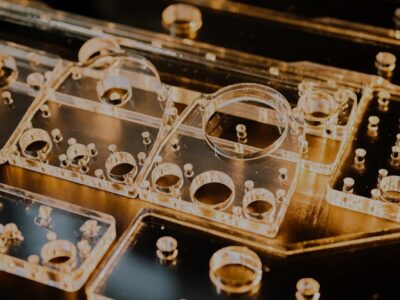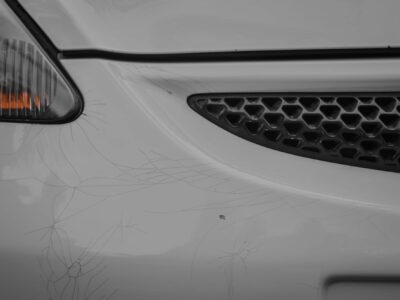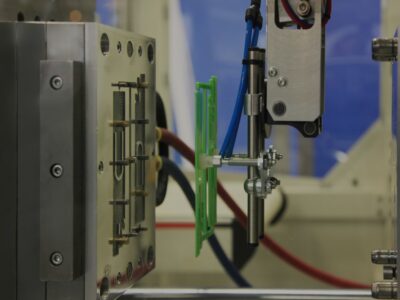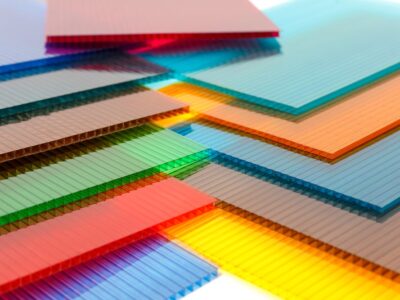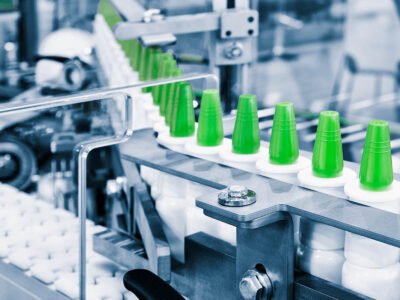Originally published on fastradius.com on May 13, 2021
Just like human skin, plastics are prone to UV damage. When designing components, you should anticipate the effects of UV corrosion and prepare your materials to handle the harsh sun. Luckily, there are many ways to increase a material’s UV resistance.
UV resistance refers to a material’s ability to avoid degradation caused by the absorption of UV radiation. The sun’s UV rays break down chemical bonds in polymers, causing plastics to wear down and disintegrate over time. This is known as photodegradation.
Photodegradation can cause discoloration (especially yellowing or whitening known as “chalking”), contributing to loss of impact and tensile strength and making plastics brittle and prone to cracking or breaking. UV damage also negatively impacts elongation, which is the ability of a material to resist changes before irreversible deformation.
Your material will need to have more or less UV resistance depending on your product’s application and other project requirements. As expected, components for outdoor use and industrial applications generally require higher UV resistance in order to maintain optimal quality and performance.
Five Plastics With High UV Resistance
Before we dive into the plastics that can best resist the sun’s rays, it’s important to understand that almost no material is completely UV-resistant. Different materials may offer varying degrees of UV resistance, but most plastics require stabilizers or additives to improve UV resistance. As mentioned above, components for outdoor applications — such as greenhouse films, window frames, automotive parts, and stadium seats — are most susceptible to UV radiation and long-term photodegradation.
Without further ado, here’s our list of the top five UV-resistant plastics:
Acrylic
Acrylic is among the only manufacturing materials that is inherently UV-resistant. It is a transparent plastic that suffers as little as 3% degradation over a 10-year period when used in outdoor applications. Acrylic also offers good scratch resistance, making it an excellent choice for long-term use.
Acrylic is a popular choice for outdoor signs and displays, light fixtures, decorative panels, and colored lenses. Unfortunately, acrylic is not very strong — in fact, acrylic is so rigid and brittle that it is rarely used for any load-bearing parts or parts that require long-term durability. But for some components, acrylic’s UV resistance makes it a worthwhile investment.
High Density Polyethylene (HDPE)
HDPE is a thermoplastic often utilized in playground equipment due to its durable yet soft qualities. It easily melts and molds into shapes, and unlike other thermoplastics, doesn’t form sharp, dangerous edges when it breaks.
HDPE is extremely resistant to acids, alcohols and bases, and can even repel graffiti. This, along with its fierce protection against photodegradation, makes HDPE an excellent candidate for open-air infrastructure, containers, plastic toys, outdoor furniture, and pipes. Although HDPE is tough and difficult to wear down, it is only somewhat stronger than acrylic and is therefore not well-suited for high-pressure applications.
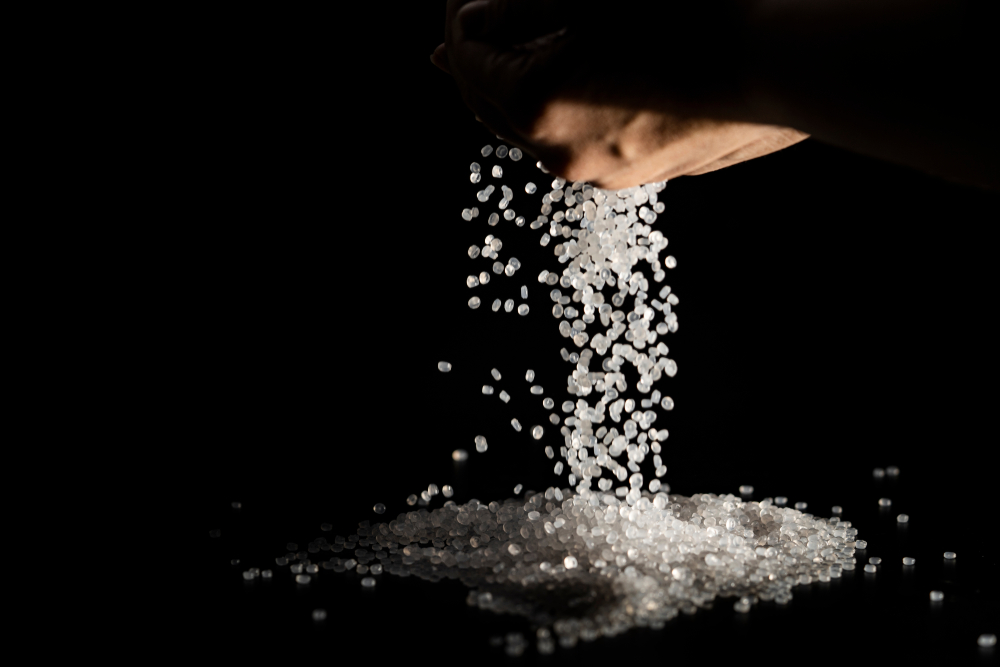
Polycarbonate
Polycarbonate is incredibly impact-resistant, and is far stronger than HDPE. Plus, it offers comparable transparency to acrylic. Polycarbonate is also tolerant of major temperature fluctuations. These factors make polycarbonate an ideal material for use in heavy-duty products such as helmets, safety goggles and shields, safety windows, and containers.
Although polycarbonate is strong and durable, it is also more expensive than many materials on this list. That isn’t to say it’s never worth the price — for some components, the durability, longevity, and relative UV resistance of polycarbonate are worth the higher price point.
Polyamide-Imide (PAI)
PAI is a high-performance thermoplastic offering exceptional UV resistance in combination with good malleability. PAI combines the properties of polyamide (nylon) and polyimide, resulting in a strong, chemically-resistant plastic with a high melting point.
PAI has excellent strength and stiffness, wear resistance, and low friction qualities. For these reasons, PAI is often used for magnet wires, surgical instruments, and other parts that require tight tolerances and dimensional stability over time. PAIs are certainly expensive, and often require pricey post-curing processes to achieve their full potential against UV rays, other chemicals, and everyday wear-and-tear.
Polyvinylidene Fluoride (PVDF)
PVDF is a UV light resistant plastic that offers incredible thermal stability, abrasion shielding, and protection against chemicals and UV radiation. It is easy to weld thanks to its high heat resistance.
PVDF comes in two forms — homopolymer PVDF boasts higher strength, stiffness, and heat deflection than copolymer PVDF, which is less stiff but offers superior impact and stress crack resistance. Both forms of PVDF are used in chemical tank liners, semiconductor equipment, and in components like fittings, seals, gaskets, nozzles, piping, pump and valve parts, and more.
Improving UV Resistance in Plastics
While the plastics listed above offer various degrees of resistance to UV radiation, you can increase the UV resistance of these materials and other plastics by adding UV-resistant additives or caps to protect the base polymer. Caps, or protective seals, can help limit the effects of photodegradation and even improve the look of your material, increasing product longevity and aesthetic.
There are three main kinds of UV-resistant additives: blockers, absorbers, and stabilizers. Blockers coat plastics with a protective layer, keeping them safe from UV radiation. Carbon black is a strong, effective, and very common blocker for outdoor applications, blocking against UV rays at a rate of about 2%. Titanium dioxide, a pigment, is also an effective blocking or screening solution.
Absorbers are usually organic compounds designed to absorb UV light and emit a less harmful wavelength, such as heat, in its place. Two common absorbers are benzophenones and benzotriazoles. Benzotriazoles have low color influence over materials and can be used at low dose rates — oftentimes, benzotriazoles are used in conjunction with acrylic and polycarbonate to maintain transparency. Benzophenones are often combined with polyvinyl chloride (PVC) and polyolefins, as these two plastics are not very resistant to UV light.
Unlike absorbers, stabilizers prevent a polymer’s bonds from rupturing using chemical techniques. These chemicals dissipate UV radiation, yielding lower UV levels that won’t attack polymer chemical bonds. Hindered Amine Light Stabilizers (HALS) are common absorbers that turn excited UV reactions into stable chemical reaction
Start Making Parts With UV-Resistant Plastics
Although no plastic is entirely protected against UV rays and radiation, many plastics offer excellent levels of UV resistance that increase lifespan, prevent elongation, and fight the effects of photodegradation such as chalking, loss of strength, and increased brittleness. It’s vital to do your due diligence in selecting a material so you can feel confident in your part’s ability to perform as intended for as long as possible.
At SyBridge, our team of seasoned engineers, designers, and technologists come to the table with years of experience in material selection, manufacturing, and optimizing product lifecycles. Partner with SyBridge for reliable advisory on material selection for any given project. We’ll match your requirements with the best-suited material for your objectives, needs, and price point. Plus, we’ll help you optimize efficiency throughout the product development process, streamline production, and save you costs along the way. With a full suite of manufacturing and design services, we’re prepared to bring your vision to life. Contact us today to get started.

